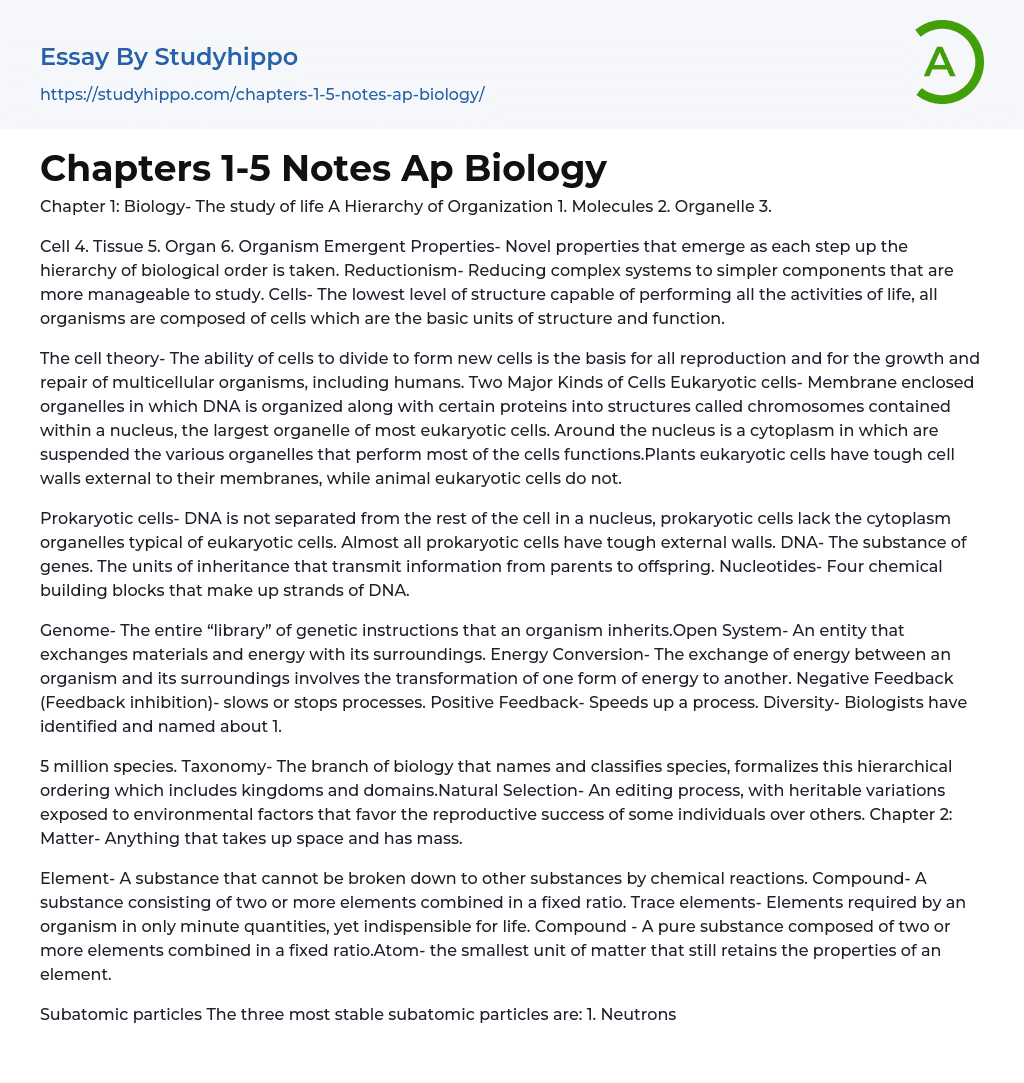

The Study of Life a Hierarchy of Organization Essay Example
Topics:
View Entire Sample
Download Sample
Text preview
- Reductionism- Reducing complex systems to simpler components that are more manageable to study.
- Cells- The lowest level of structure capable of performing all the activities of life, all organisms are composed of cells which are the basic units of structure and function.
- The cell theory- The ability of cells to divide to form new cells is the basis for all reproduction and for the growth and repair of multicellular organisms, including humans.
- Two Major Kinds of Cells Eukaryotic cells- Membrane enclosed organelles in which DNA is organized along with certain proteins into structures called chromosomes contained within a nucleus, the largest organelle of most eukaryotic cells. Around the nucleus is a cytoplasm in which are suspended the various organelles that perform most of the cells functions.Plants eukaryotic cells have tough cell walls external to their membranes, while animal eukaryotic cells do not. ...
- Prokaryotic cells- DNA is not separated from the rest of the cell in a nucleus, prokaryotic cells lack the cytoplasm organelles typical of eukaryotic cells. Almost all prokaryotic cells have tough external walls.
- DNA- The substance of genes. The units of inheritance that transmit information from parents to offspring.
- Nucleotides- Four chemical building blocks that make up strands of DNA.
- Genome- The entire “library” of genetic instructions that an organism inherits.Open System- An entity that exchanges materials and energy with its surroundings. Energy Conversion- The exchange of energy between an organism and its surroundings involves the transformation of one form of energy to another. Negative Feedback (Feedback inhibition)- slows or stops processes.
- Positive Feedback- Speeds up a process. Diversity- Biologists have identified and named about 1. 5 million species.
- Taxonomy- The branch
View entire sample
Join StudyHippo to see entire essay
of biology that names and classifies species, formalizes this hierarchical ordering which includes kingdoms and domains.
bond between atoms formed by sharing a pair of valence electrons, such as a molecular hydrogen (H2 ).
Popular Essay Topics
- Microbiology essays
- Bacteria essays
- Cell essays
- Enzyme essays
- Photosynthesis essays
- Plant essays
- Natural Selection essays
- Protein essays
- Viruses essays
- Cell Membrane essays
- Human essays
- Stem Cell essays
- Breeding essays
- Biotechnology essays
- Cystic Fibrosis essays
- Tree essays
- Seed essays
- Coronavirus essays
- Zika Virus essays
- Agriculture essays
- Albert einstein essays
- Animals essays
- Archaeology essays
- Bear essays
- Biology essays
- Birds essays
- Butterfly essays
- Cat essays
- Charles Darwin essays
- Chemistry essays
- Dinosaur essays
- Discovery essays
- Dolphin essays
- Elephant essays
- Eli Whitney essays
- Environmental Science essays
- Evolution essays
- Fish essays
- Genetics essays
- Horse essays
- Human Evolution essays
- Isaac Newton essays
- Journal essays
- Linguistics essays
- Lion essays
- Logic essays
- Mars essays
- Methodology essays
- Mineralogy essays
- Monkey essays



